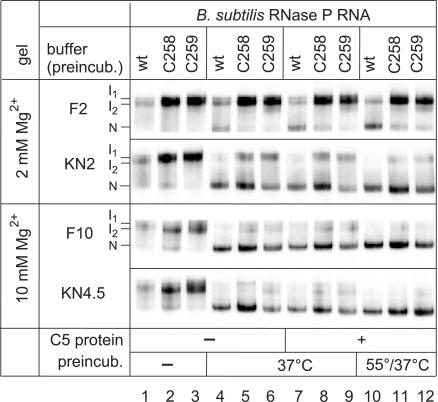Figure 2.
Growth curves of SSB318 cells complemented with pHY300 derivatives, carrying S. aureus rnpBwt (squares) or rnpBC238 (triangles with apex at the top) or rnpBC239 (triangles with apex at the bottom) mutant alleles in the presence (+) or absence (−) of IPTG. The better growth of SSB318 bacteria expressing S. aureus rnpBwt (squares) relative to SSB318 carrying the empty vector and grown in the presence of IPTG (open circles) can be explained by the finding that IPTG-induced expression of the chromosomal rnpB gene in the SSB318 mutant strain is weaker than rnpB expression from the native promoter in the original strain W168 used to construct SSB318 ((17), Figure 3 therein). Improved growth was also observed when we expressed B. subtilis rnpBwt from pHY300 in strain SSB318 (data not shown), showing that this effect is not specific for S. aureus rnpB. We conclude that plasmid-borne expression of S. aureus or B. subtilis rnpBwt saturates the cellular RNase P levels in SSB318 bacteria and thereby restores wild-type-like growth.

